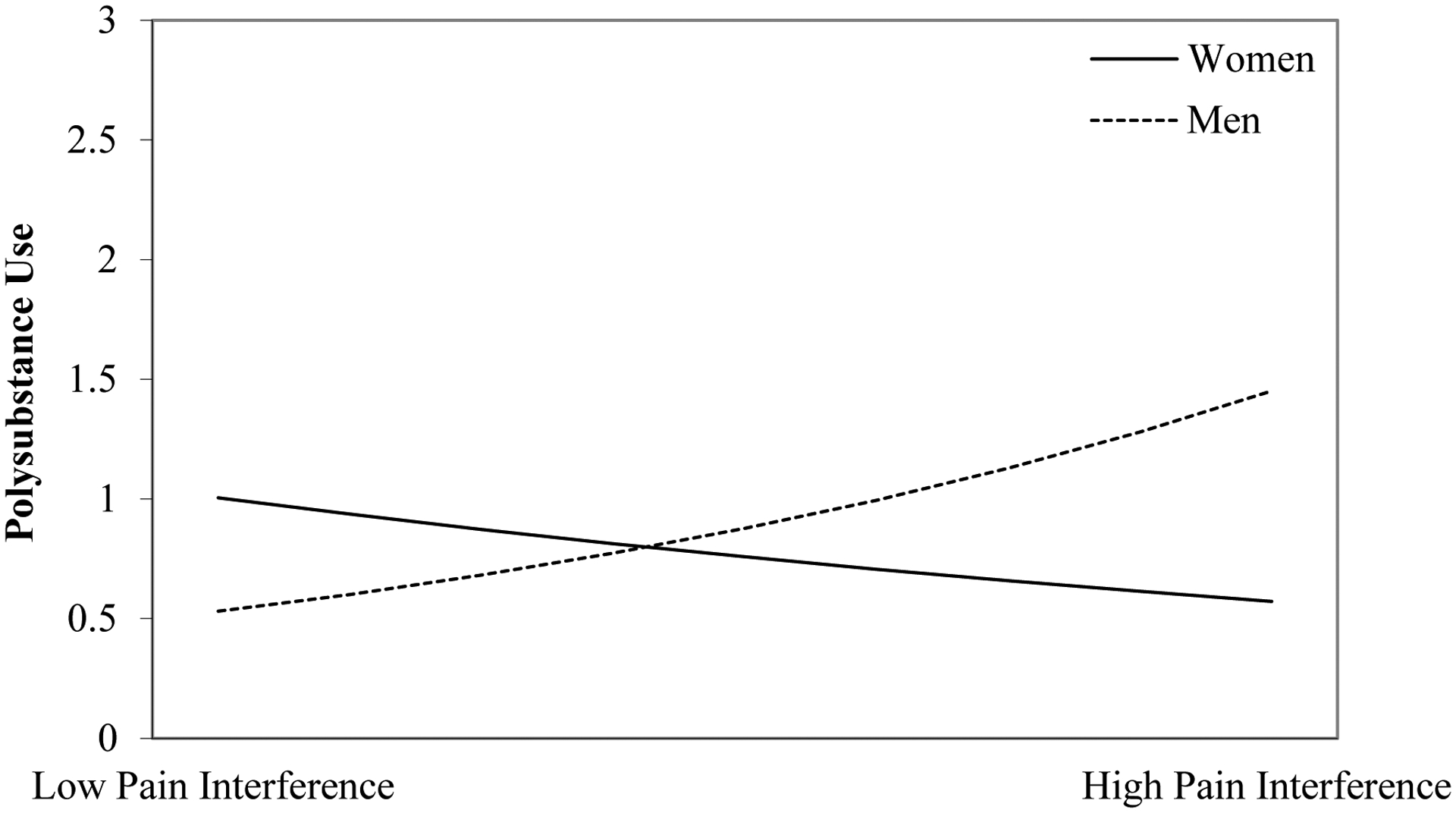Figure 1.

The association between pain interference and polysubstance use is stronger in men than in women
Note: The polysubstance use variable represents the number of substances greater than one that a participant used in the previous month (e.g., a value of zero for polysubstance use is equivalent to one substance used in the previous month). Low pain interference = −1 standard deviation of the pain interference scores; high pain interference = +1 standard deviation of the pain interference scores.
